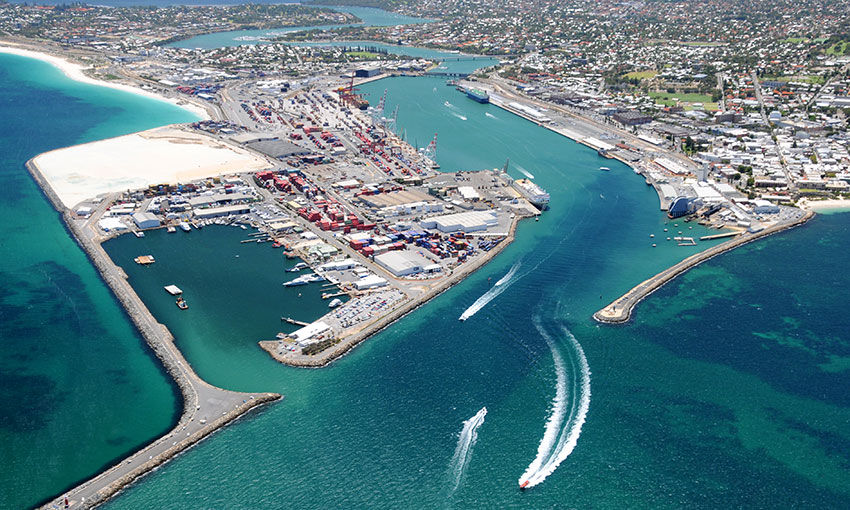THE WESTERN Australian government has announced support (mostly) for the state infrastructure body’s recommendations for Westport, the Australian Marine Complex and direct shipping to the state’s north.
The state government on Friday (3 February) released its response to Western Australia’s first State Infrastructure Strategy, Foundations for a Stronger Tomorrow.
The strategy contains 93 recommendations covering nine infrastructure sectors, divided into short, medium and long-term timeframes, some of which extend into 2024.
Infrastructure Western Australia (IWA) created the strategy over two years and tabled it in Parliament in August last year.
Since August, the state government has been in consultation with the public sector to formulate a response.
Westport and Fremantle Inner Harbour
In a section addressing Westport and Fremantle Inner Harbour, IWA recommended complementing Westport’s preparations for a new container port in Kwinana by conducting further strategic planning.
Recommended planning focusses timing for Outer Harbour investment and operations, the future location of non-container trades currently based in the Fremantle Inner Harbour and the road and rail supply chain servicing the Inner Harbour.
It also considers a long-term Inner Harbour masterplan and progressing planning for strategic economic development opportunities in the Western Trade Coast to leverage planned Westport investment.
The state government pledged full support for the IWA’s Westport recommendations.
Australian Marine Complex
IWA also recommended supporting strategic economic development opportunities at the Australian Marine Complex in Henderson, which is home to some of Australia’s largest commercial shipbuilders.
The infrastructure body suggested undertaking further planning and staged expansion of common-use infrastructure consistent with the AMC Strategic Infrastructure & Land Use Plan and industry requirements.
According to IWA, the plan includes strategic infrastructure proposals such as a large-vessel dry berth to support the construction and out of water maintenance of large-hulled vessels.
The Western Australian government said it fully supports IWA’s recommendations for the Australian Marine Complex.
Direct shipping to the north
IWA also recommended enhancing supply-chain efficiency by supporting the expansion of direct shipping services to the state’s north.
It noted most freight bound for northern Western Australia is shipped to Fremantle Port and transported to the north of the state by truck.
IWA believes “enabling direct freight shipping services between Asia and ports in the Pilbara and Kimberley regions could realise significant cost savings and transform intrastate freight markets”.
It acknowledged some direct shipping services have recently commenced.
IWA’s recommendation to support the expansion of direct shipping comprises several elements.
The first involves assessing the viability, costs and benefits of long-term direct shipping services and associated infrastructure requirements
The second involves seeking Northern Australia Infrastructure Facility and private funding for any major new port facility required for direct shipping, including new common user general cargo facilities.
The third element is funding, in partnership with the Australian government, all relevant port facilities to have appropriate first point of entry infrastructure and systems (for border control, customs and quarantine requirements).
And the fourth element involves planning for fit for purpose road connections to direct shipping facilities.
The state government pledged full support for three parts of IWA’s direct shipping recommendation, but not the second element, which relates to funding any major new port facility required for direct shipping.
“Should new port facilities be developed in connection with direct shipping, these facilities would be multi-user in nature, and operated by the relevant port authority,” the government wrote in its response.
Moving forward
Premier Mark McGowan said the strategy provided recommendations to improve how the government manages, delivers and plans for state infrastructure.
“The state Government response demonstrates our commitment to these objectives, with almost all of Infrastructure WA’s recommendations either fully or partially supported,” he said.
IWA welcomed the government’s response to the strategy, noting the government supported 98% of the recommendations in full, in part or in principle.
It said the response enables state government agencies and trading enterprises to align their strategies, plans, policies and major infrastructure initiatives with the supported recommendations.
IWA chair Nicole Lockwood said the largely supportive response is a significant milestone for the infrastructure body and Western Australian community.
“This strategy provides a central vision and a long-term outlook to guide the planning and delivery of all state government infrastructure over the next 20 years and beyond,” Ms Lockwood said.
“It considers the entire state’s key infrastructure needs and priorities in the context of our global environment, WA’s unique strengths and strategic opportunities, so public funds spent on infrastructure are well targeted.
“That way we can achieve lasting impacts and tackle big issues like climate change, Aboriginal empowerment, digital transformation and data management, and ensure WA has access to the infrastructure it needs both now and into the future.”
IWA CEO Phil Helberg said consultation with more than 800 stakeholders over two years added to the evidence-based research and investigations that informed the final strategy.
“Without those rich on-the-ground insights and intelligence, we could not have produced such a holistic, broad-reaching and practical inaugural strategy for the WA government and, ultimately, the Western Australian community.
“The fact that 98% of the report’s recommendations were accepted is a positive reflection on the approach taken, the quality of the recommendations in the strategy and the broad support amongst stakeholders for the future direction of our state.”
IWA said it will now turn its attention to implementing the supported recommendations.
It said the partially and fully supported recommendations will transition to state government agencies and trading enterprises to lead their implementation.





